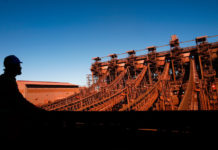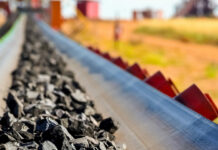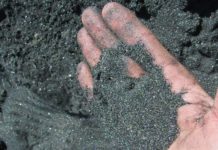
[miningmx.com] — SOUTH Africa’s manganese sector is geared for large-scale expansion and would add around 15% to global capacity.
Three new mining projects would come into being this year, after demand and the price of manganese collapsed in 2009.
By 2013 the new mines could together almost double manganese ore production in the country from the 2010 record output figure of close to 7.2 million tonnes (mt).
Black groups would own between 40% and 51% of these three mines.
The sector, which is integrated with the ferro-manganese industry, is currently dominated by Samancor Manganese (Anglo American and BHP Billiton) and Assmang (African Rainbow Minerals and Assore).
But in March, United Manganese of Kalahari (UMK) officially opened its manganese mine in die Northern Cape, while Kalagadi Manganese aims to start production at its mine by 2012.
A partnership between Ntsimbintle Mining and Jupiter Mines (in which Brian Gilbertson’s Pallinghurst Resources and Saki Macozoma are involved) intends to deliver ore from its Tshipi Mine by 2013.
This year the UMK mine is already able to deliver 1.8mt, while Kalagadi and Tshipi aim for 2.4mt a year.
But whether these production targets can be achieved depends on Transnet’s ability to carry all the additional ore to the coast, because the existing railway lines can barely handle the ore from the two existing producers.
Transnet has undertaken to increase, in time, the rail capacity available to the manganese mines from some 5mt a year to 12mt a year – more or less the levels production will reach when the new mines get going.
Transnet currently transports the lion’s share of manganese ore to Port Elizabeth, but it is considering moving its manganese export operations to Saldanha, which would naturally be closer to the manganese mines.
The fact that all three new mining groups have launched into large-scale capital expenditure indicates a degree of confidence in Transnet and the sector’s prospects.
Conditions in the manganese market are now linked to global steel production, as about 7.5kg manganese is need to produce a tonne of steel.
The three mines are vertically integrated to an extent with large international manganese consumers.
ArcelorMittal SA owns 50% of Kalagadi and plans to buy half its production.
South Korean steel giant Posco is an investor in Tshipi and the Russian metals group Renova owns 49% of UMK.
As in the case of many sectors, in 2008 South Africa’s manganese mines peaked with sales worth R17.3bn, after which the market collapsed in 2009.
Last year sales worth R10.66bn were achieved and in the first two months of this year sales rose 43% year-on-year.
South Africa exports about 90% of its manganese ore and the remainder is processed into ferro-manganese in smelters, also mainly for export.
There is thus considerable opportunity for greater beneficiation of the ore. This year Kalagadi is starting to build a new smelter at Coega outside Port Elizabeth at a cost of R4.2bn to enable it to convert more than a third of its ore into 320 000 tonnes of ferro-manganese.
This plant is now the beleaguered Coega industrial zone’s key client.
Together with platinum and chrome, manganese numbers among minerals whose known reserves occur almost exclusively in South Africa.
The Kalahari Basin contains 80% of the world’s resources, but currently contributes only 15%-odd of global production. South Africa, China and Australia are the world’s top producers.
– Sake24










